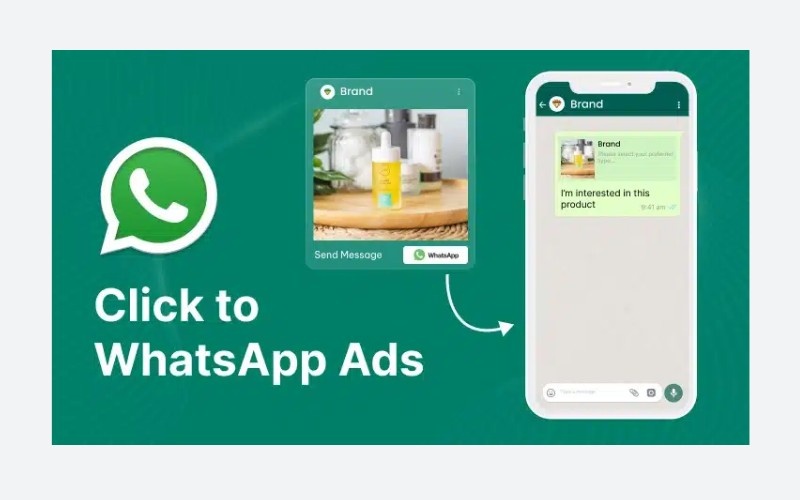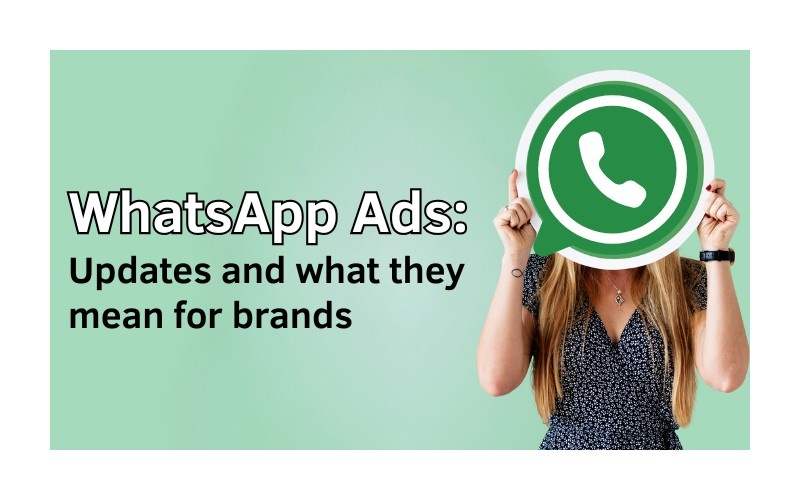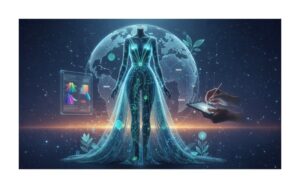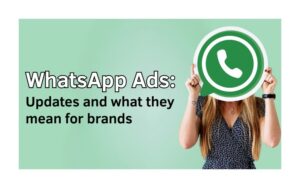Introduction: A Turning Point for WhatsApp
WhatsApp has always held the reputation of being ad-free and a personal messaging application. But in mid-June 2025, Meta started to roll out advertising in a controlled manner, which is, by far, the biggest monetization transition of the app since its very inception. Ads can now be seen in the Updates tab of WhatsApp (Status+Channels chat), and private chat stays untouched. The shift is an indication of the cautious approach that Meta has taken to strike the right balance between doing business and respecting privacy among its users.
What’s New: Status Ads and Promoted Channels
WhatsApp has been testing two conspicuous advertising formats in beta to some of the users: Status Ads and Promoted Channels. Status Ads appear amidst status updates created by users and are marked with the appropriate labels as Sponsored. Such a format is similar to Instagram Stories advertising, which has an understandable look and feel discouraging more users and providing a matrix through which a brand could market its offers without infringing on personal messages.
In the meantime, there is the promoted channels where a business or creator can pay their way to improved visibility in the channel discovery directories of WhatsApp. These promotions provide the people using Channels to discover who the users are, and thus, brands can stimulate their audience at a broader pace than with the help of organic discovery itself.
Campaign Management Across Meta Ecosystem
At their Conversations-2025 event, WhatsApp became a part of the wider Ads Manager system. Marketers can now run campaigns in WhatsApp, Facebook, and Instagram using just a single interface. They can repurpose creative, budgets, and audiences and leverage the Meta Advantage+ AI-powered delivery across platforms-which will deliver more coordination and efficiency-including WhatsApp Status ads.
AI Agents, Automation, and Enhanced Customer Journeys
The Business API of WhatsApp has received a lot of capabilities in 2025. Virtual agents now give answers to FAQs, provide product recommendations and qualify leads, script customers through purchase funnels, and even check on them after purchase, all with a conversational experience when powered by AI
The WhatsApp Business platform accounts have also got a voice and video calling feature integrated, which makes their customer support richer and increases conversational commerce. The analytics are recorded to monitor these interactions so that brands can review the call metrics and enhance the quality of service delivery.
Pricing Changes and Messaging Controls
Meta has changed its pricing model for conversations to a per‑message pricing model. The 24-hour window of customer service and unlimited free messaging is beneficial to businesses, as newer expansions have provided full free messaging of service chats regardless of volume.
Click-to-WhatsApp advertisements have recently delivered an opportunity to send a message free of charge even following a 72-hour interval. Discounts provided through volume-based pricing are also given: the unit rates decline as the volume of messages of a business scales up on tiers, particularly the utility and authentication messages.
WhatsApp has a limit on the number of messages that can be sent by a user or in a conversation as well. These limits will prohibit the over-messaging, provide a better customer experience, and economies of scale and compliance.
Privacy Assurance and Targeting Transparency
Meta focuses on making sure its users have privacy guards on each update. The limited data used in ads displayed in the Updates tab includes location, language, channel subscriptions, and ad interaction, but not the message content, phone number, and one-on-one chats. The advertisements are labelled clearly and users have the right to block a specific advertiser or simply report content they do not like As most users have been vociferous in their objections in the beginning towards ads on what was an originally closed platform, WhatsApp makes the point that personal messages and group chats remain end-to-end encrypted and they cannot be accessed via ad targeting data usage.
Implications for Brands
Businesses have new opportunities with these changes. WhatsApp has also opened up brands to its 1.5 billion daily Status users to access them with ads in a native style, turn them into conversation-based leads, and then keep conversing through chat. With AI agents and voice features, customer support and sales can be conducted in WhatsApp exclusively, and the conversion rate will be much higher since friction is minimal.
The centralized management of campaigns on the Meta platforms implies a more convenient workflow. The integrated results can be achieved through using WhatsApp with placement in Instagram and Facebook, as Brands can optimize the campaign efficiently.
But new ad targeting and campaign defaults to cast a wide net first, like Meta, choosing a default narrower targeting in WhatsApp destination advertising, where highly specified targeting is unavailable, so just trusting the AI engine more than ever

A New Era of Conversational Commerce
Finally, WhatsApp is moving in an indication of change, with 2025 updates, it is reverting its focus to business and leaving individual chat behind. The prospect is seeing how to design frictionless conversational fluxes that begin with Status Ads, and then bring the user through the intelligent conversation on an AI-assisted ride, and end up in chat, voice, or video. Success will be characterized by privacy-conscious targeting, strategic spending, and planning of the overall campaign.
From Passive Browsing to Active Conversations
WhatsApp advertisement is not like any other traditional ads on Facebook or Instagram, where the interactive and watching part of the audience remains in the background, and the audience control is never in the hands of the user., WhatsApp advertisement changes this at the flick of a finger. A user can simply tap once on an ad using the Status or Promoted Channel and initiate direct communication with a brand. Such conversational purpose brings about a new form of communication: rather than a simple post like or a video watch, the users chat with an actual or AI-supported version of a representative. There are gigantic implications.
The brands do not have to wave people to a landing page and complete forms anymore. The chat, in turn, turns into the landing page, the form of leads, and a sales funnel simultaneously. Businesses will be able to collect information, counter objections in real-time, and provide personalized recommendations within the safety and privacy of the trusted WhatsApp.
This architecture fits well with the emerging trend of conversational commerce, particularly in new markets such as India, Brazil, Indonesia, and Nigeria, where WhatsApp is the dominant messaging system and where conventional e-commerce portals are still not always necessarily trusted.
Audience Behavior on WhatsApp: High Trust, High Engagement
WhatsApp is a very personal environment. It is used by people to send to their friends, family, and people they trust. WhatsApp, unlike open networks, is an invitation-only platform, which does not have a public feed, no algorithm to interfere with your primary experience, and no third-party comments from unknown persons. This implies that by the time users decide to communicate with a brand through WhatsApp, they will do it with a lot of intent.
The trust level is also a greater obstacle for brands to achieve success: the more advertising feels like an intrusion, out of context, or spam, the more likely users are to block or mute the brand instantly. This is why WhatsApp advertising should have a different tone that is less appeasing and more people-oriented. Status Ads must not seem to be intrusions; rather, they should appear to be visitations carried out by a close acquaintance.
A new theme will be customer-oriented messages that will emphasize relationships as opposed to direct response messaging frameworks deployed by brands. It is more than selling; it is to begin a conversation that will lead to trust, which leads to loyalty.
Creative Strategy: Designing Ads for the Chat-First Experience
WhatsApp Status Ads act like Instagram Stories, which is in contrast to the traditional display ads. They should be vertical, visual first, and have a fast, strong story to deliver in 5-10 seconds. Nevertheless, it is not impressions but interaction. The list should contain a simple chat-like call to action, such as a Message us to get a demo, Chat with us about prices or Get your offer today in each advertisement.
Immediacy can be created with the help of visual clues, e.g., tap-to-chat call-to-action buttons, interrogatives, or lightning deals. Stations are supposed to be brief. Videos tend to do better than a still image where there is a human face and straight talk in it, says Hey! Are you in need of assistance in selecting the correct phone plan? Tap to talk/Tap to talk.”
The after-click experience is also something that businesses should be ready for. The dialogue needs to be flawless. Customers demand instant responses- automated welcome messages, smart flow dictated by keywords, and AI chatbots must be prepared to help them in the first second with something useful.
Click-to-WhatsApp Ads: The Invisible Bridge
Click-to-WhatsApp advertisements (users view the ad on Facebook or Instagram and are sent to a WhatsApp chat) were already found to be extremely successful, with Meta stating that these lead conversions have been higher, with some of them having lower costs-per-acquisition compared to the web-based funnels. Now, the friction of jumping out of one application into another is eliminated as WhatsApp-native ads have been rolled out.













